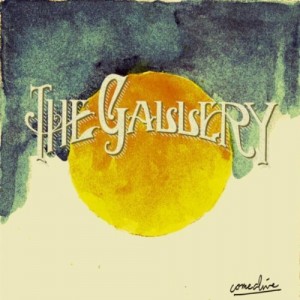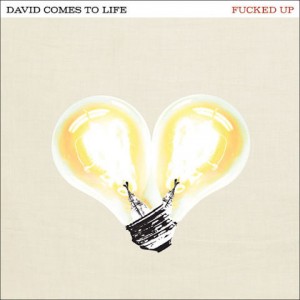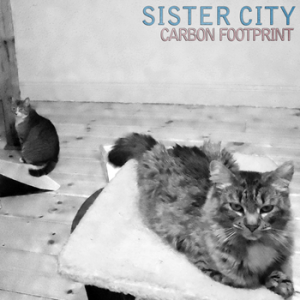Reviews
Review: The Gallery – Come Alive
The Gallery – Come Alive
Released: February 22, 2011
Label: Unsigned
Purchase: iTunes | Amazon | Bandcamp
The Gallery is a band on the rise. Having built grassroots bases in their New England home and later in Florida, they embarked on a national tour in 2009 and have been more recently performing with bands such as The Maine and We the Kings. After a few spins of their EP Come Alive, you’ll see that this brewing rise is well-deserved and you may just be inclined to hop on the bandwagon before there even is a bandwagon.
Just a few seconds into opener “Catalyst”, listeners will likely catch one reason for the band’s increasing popularity: it’s not difficult when your biggest musical influences are already well-established within mainstream and indie circles. In a nutshell, they’re Bruce Springsteen without the synths and saxes, The Hold Steadywith fewer keys and less of a bar-rock sound.
Getting through the rest of the song, listeners will see another reason: “Catalyst” is really good, perhaps even too good. Catchy hooks are a dime a dozen these days, but songs that combine these hooks with such simple, earnest lyrics are harder to come by. It’s true that there are no deep insights, but lines like “This is a walk away / from those dirty little games you played. / I heard your sorrys, but I saw no change. / I gave you love, you gave me pain,” when backed by such honest music and Brendan Cooney’s hometown vocals packs a solid punch. It almost makes the rest of the EP struggle slightly to keep up in comparison, but it gives a valiant effort.
“Ballroom of Broken Hearts” slows down the tempo, but maintains the EP’s pace. Vocally and lyrically, it leans more heavily on The Boss than any other track, telling the tale of a girl “unlucky in lust.” It showcases their mature musicianship by effectively stripping down the first chorus, but doesn’t rely on it for the other choruses, instead adopting a fuller sound becoming less wistful, adapting to the entire song’s structural buildup. It’s less likely to be heard on the radio than “Catalyst”, but it is nonetheless good enough to prove that “Catalyst” wasn’t a fluke.
Tackling a different lyrical theme is “Who’s in the Right”. On one level about a fighting couple, it undeniably speaks to our country’s bigger conflicts as well with the simple observation “We’ll drop bombs all day and night/ to show who’s in the wrong and who’s in the right.” Even though it’s an anti-war song to some extent, it doesn’t fall on the trite clichés that today’s bands loved during the Bush era (i.e. no mention of a “gas war” or “fighting daddy’s battles”). Sincerity abound, it even feels close to The Avett Brothers. Unfortunately, the lyrics are stronger than the music, which relies too much on a bland guitar line.
The lightness of “Last Goodbye” serves as an excellent counter to the heaviness of its preceding track. The drum driven pre-chorus and explosive chorus are certainly engaging, but clocking in at close to five minutes, it runs slightly long.
Rounding out the EP is “Free,” which is actually a bit of a letdown. For once, the music feels too generic and the lyrics are excessively sappy. Though not a terrible song, it’s certainly a disappointment when compared to everything else before it. Not the best end, but it doesn’t detract too much from the quality of the EP on the whole. It’s not the deepest music you’ve ever heard, but it’s a solid effort by a band that you should make a point to know.
8.4
Standout Tracks: “Catalyst” and “Ballroom of Broken Hearts”
Review: Fucked Up – David Comes to Life
Fucked Up – David Comes to Life
Released: June 7, 2011
Label: Matador Recordsl
Purchase: iTunes | Insound | Amazon
Fucked Up is a punk band with epic aspirations. And their recently released third full length album, David Comes to Life, only serves to further demonstrate Fucked Up’s ambition. Divided into four acts, it tells the story of David Eliade, a factory worker, and his lover Veronica Boisson’s scheme to construct a bomb and the aftermath of its early detonation; namely, Veronica’s death. Beyond that, it’s difficult to decipher the plot; to do so, one would have to spend extensive time analyzing the lyrics to each track. But as a listener who still doesn’t fully understand the intricacies of the story-line of this self-proclaimed “rock opera”, I can assure you that complete comprehension isn’t at all vital to enjoyment of David Comes to Life.
Besides the complicated lyrical aspects of the album, David Comes to Life isn’t an easy listen for another reason: its length. At eighteen tracks and seventy-eight minutes, the listener must be patient to easily manage a complete spin of the album in one sitting. Yet when in the right mood, one will find this album one of the most rewarding of the year.
Nearly the moment David Comes to Life commences, it’s apparent this is no ordinary punk album. Opener “Let Her Rest” is an instrumental track, decorated with twinkling piano and ambient noise. To some readers, that description might bring to mind post-rock. Yet the song is more accurately defined as a dramatic build, a preparation for what’s to come; as it progresses, the guitar lines slowly become more punk, more representative of the remainder of the album. In effect, the track’s purpose is to gradually accustom the listener to the sounds that follow.
The following track, “Queen of Hearts”, is the first we hear of Damian Abraham’s (A.K.A. Pink Eyes) snarl. It’s as ferocious as ever, yet Abraham seems to have improved his emotional range. It’s also the first we hear of Cults‘ Madeline Follin, who plays Veronica. The shimmery guitars grant the tune a bright feel and the dual narration is a unique storytelling technique. It’s certainly a standout and has the potential to become known as one of punk’s defining love songs.
The next three songs — “Under My Nose”, “The Other Shoe”, and “Turn the Season” — share lyrical similarities in that each mention “the other shoe”. In fact, it is the track named after that lyric which succeeds the most out of the three. Beginning with Follin’s cries of “Dying on the inside”, Abraham soon makes his most tortured appearance, yelping, “It can’t be comfortable when the whole thing’s about to fall.” Far and away, this is the most poignant moment on the album. An unrelated but significant side-note is that Abraham also declares that “The new lyrics follow the same old meter.” And interestingly enough, many of Abraham’s lyrics throughout the album do follow similar rhythmic patterns. But this only serves to further the cohesiveness — characterized not only by the aforementioned but similar guitar tones and song structures as well — of David Comes to Life.
That concludes the album’s first, and arguably strongest, act. Its second, however, is by no means bad. “Running on Nothing” is the highlight, with its catchy 50’s rock guitar riffing, and “A Slanted Tone”, with its brief acoustic guitar intro, is another solid tune and one of David Comes to Life‘s fastest. Despite all this, it is here and in the third act where the album drags most. It’s simply due to a couple of lesser (but still good) tracks which don’t help distract the listener from the album’s length. Yet despite the bit of unevenness in the second and third acts, it’s impossible to penalize Fucked Up too heavily, because there is just so much to explore. And because of that, David Comes to Life is an album with unquestionable lasting value.
The fourth and final act is probably the second best of the four. Its only real fault is that “One More Night” is so good that closer “Lights Go Up” is a bit of a letdown. Yet the positives of “One More Night” far outweigh the negatives of the track’s placement. It’s truly an anthem. Soaring guitar lines complement accented drumming and Abraham’s violent, defiant bark until Abraham’s shouts of “I don’t wanna be right / Just one more night” enter the mix and the guitars are left to ring out. It feels so much like the album’s conclusion; perhaps that’s why “Lights Go Up” is disappointing, merely because the listener doesn’t want to hear anymore of anything. But that’s a small price to pay for such a well-conceived album by one of the best bands operating in punk music.
8.7
Standout Tracks: “Queen of Hearts”, “The Other Shoe”, “Running on Nothing”, and “One More Night”
Review: Sister City – Carbon Footprint
Sister City – Carbon Footprint
Released: June 14, 2011
Label: Unsigned
Purchase: Bandcamp
Having never heard of Sister City, formed only in 2007, I had no idea what to expect upon downloading their new album Carbon Footprint. I saw the genre “indie punk” thrown around quite a bit, but such a description is too vague to actually say much.
Opener “Hit Too Hard” finally put a sound to the name. Even though it didn’t quite answer the question of what “indie punk” means, it did provide a ballpark sound to work with. Initially, Sister City sounds like an opening band, reminiscent of The Loved Ones or The Measure, taking cues from bigger bands, but still lacking the chops to be headliners themselves. There is a familiar, almost generic feel to the music, but under the surface, there is a passion and effort driving the band, which is demonstrated all throughout the album.
The passion is most easily heard through frontman Adam Linder’s lyrics. Like early Rise Against, he’s usually making a point about the state of the human condition, but instead of actually calling for action like Tim McIlrath, he limits himself to biting observations with a cynicism very much in the vein of Say Anything’s Max Bemis. “The things I want are simple things, like love and trust and sanity” Linder notes on “IMPERATIVE.” Closer “How Much” brings his unease to a climax, “For a couplet I sold what was left of my integrity and I don’t have any goals / but I do have an apartment in a city full of people, and a subtle, sinking feeling we’re all equals.”
Lines like these permeate every song, but unfortunately, few of them actually stick, largely because there’s a distance to them, an apathy that doesn’t inspire the listener to do something about it. Linder’s vocals don’t help much either. They’re neither bad nor particularly good – they just tend to add to the generic overall sound.
While the music in general sounds largely familiar, Sister City does distinguish itself from the pack to some extent with their poignant use of rests. They immediately set to this trend in the stop-start “Hit Too Hard” and continue through with such usages as the pre-chorus holds of “Some Prefer Nettles,” the one beat rests on the repeated chorus of “IMPERATIVE.” The rests are very calculated to add impact to the lyrics, and nearly always work well. It’s just a small touch, but it does make their music more distinct.
There is a certain level of maturity in their musicianship as well. Many of their songs have different phases to them- they don’t usually end up in the same musical place where they were at the beginning, but they’re still within the general sound, so the song isn’t too disjointed. For the most part, this too works fairly consistently, such as with the double-time outro topping off the already engaging “Ellis Island Blues.” The biggest offender with this patchwork style is “Eff That” which suffers from too much schizophrenia. The smooth verses don’t blend well with the No Use For A Name-sounding chorus, and the bridge is much too forced, making it one of the only songs that would be considered weak overall.
While much of their music is familiar, familiarity isn’t always a negative thing either. Sister City wear their influences on their sleeves, and fans of the general scene won’t be disappointed. Much of their music sounds like a lighter version of Against Me!, and they wear this influence proudly, even naming a song “Reinventing Adm Linder.” Ironically, this song is eerily similar to “Hey There Delilah.” Plain White T’s comparison notwithstanding, it’s actually one of the album’s lyrically strongest and catchiest songs overall.
Swaying away from Against Me!, Sister City turn to NOFX with “IMPERATIVE,” driven by a bouncing bass that sounds like it’s straight out of “Timmy the Turtle.” Pulling out all of the stops, “How Much” channelsManchester Orchestra with a slow buildup to a climactic finale. These songs are generally good for what they’re worth, but at the same time, they feel like the diet version of some of your favorite bands.
Overall, even after a few spins, I still find that Sister City is a very difficult band to describe. After some thought, I have concluded that one of the most apt metaphors is that Sister City is a cloud. The band can’t be clearly defined or put into one particular musical box. Their influences are numerous, yet they still have a single cohesive, recognizable sound. Finally, there is definitely substance to their music and lyrics, but when you reach out to touch it, you may not end up feeling much in the end.
7.4
Standout tracks: “Ellis Island Blues” and “Reinventing Adm Linder”
Review: The Dangerous Summer – War Paint
The Dangerous Summer – War Paint
Released: July 19, 2011
Label: Hopeless Records
Purchase: iTunes | Insound | Amazon
For better or worse, we’ve all come to grips with the fact that life isn’t always a smooth ride. Turbulence along the way is inevitable and in these rough patches, we’re forced to find our own way. Sometimes, things just aren’t worth the trouble. Sometimes, we decide to quit and move on. And thus, we put on our war paint and we march through the battlefield.
The Dangerous Summer are no strangers to the ups and downs of life. Between the release of 2009’s Reach For The Sun and War Paint, they’ve had their fair share of struggle: the temporary departure of drummer Tyler Minsberg (who does not play on the album), the feud between guitarist Cody Payne and the now broken-up You, Me, and Everyone We Know, coping with their careers as musicians, and more. But instead of whining on their new record, the Maryland four-piece has crafted a timeless anthem of growth, struggle, and determination, all without appearing trite.
Title track “War Paint” opens the album with a rapid blare of drums and guitars, eventually easing off for vocalist AJ Perdomo to make his entrance. Right away, Perdomo’s honesty and emotional delivery shine through, belting out “There’s a lot on my plate / And the ones I loved stopped answering / They left me to find my self / In my own hate.” Second track “Work In Progress” continues with even more intensity, providing an emotionally moving self-examination that rides out on a wave of reverb and deep panting. Musically, War Paintis the most varied that the band has ever been – one of the only flaws of their debut – a sentiment that is highlighted by the sharp transition from the dark “Work In Progress” to the relatively chipper sounding “No One’s Gonna Need You More”. Ironically, the song’s subject matter is nowhere near as happy as it sounds (“Moving ‘cross the country / I lost track of time / Trying to make a name for myself / ‘Cause every lonely heart / Can use an honest song / They can sing along to.”) but the change in sound does provide a breath of fresh air.
The highly optimistic “Good Things” and lively “Siren” continue with the atmospheric blend of drums and guitars, with a greater emphasis placed on Bryan Czap’s undulating lead guitar line on the latter. Standout track “Everyone Left” slows things down, while also demonstrating just how much the band’s songwriting ability has improved, especially the lyrics of AJ Perdomo. While Perdomo has always been inclined to wear his heart on his sleeve, his visceral lyrics have begun to take a more poetic and abstract turn, painting an even more powerful image of his emotional and mental state. On “Everything Left” he questions, “When you decided to take it / What did you take from it? / Was it worth the heart involved? / The obstacles? / The chemicals? / I need to know what you’re trying to see.” and we wonder ourselves.
That’s the beauty of War Paint. It’s an album that we don’t just passively enjoy, but one that we can all actively relate to; one that reminds us that no matter what life is throwing at us, we can put on our war paint and fight our way through.
9.2
Standout Tracks: “Work In Progress”, “Siren”, and “Everyone Left”
Single: Pusha T – “Trouble On My Mind (feat. Tyler, The Creator)”
Track: “Trouble On My Mind (feat. Tyler, The Creator)”
Artist: Pusha T
Release Date: July 9, 2011
Label: GOOD Music/Def Jam
Pusha T always has his drugdealer past on his mind (and in his verses), but this time, the Clipse rapper teams up with Odd Future‘s Tyler, The Creator to discuss the trouble on his mind. The first single from Pusha’s upcoming mixtape Fear of God 2: Let Us Pray, “Trouble On My Mind” features simplistic, atmospheric, and ultimately haunting production from The Neptunes and three on-point verses. Pusha spins a story about his troubled past before handing the mic to Tyler, who delivers a maniacal verse in his signature style. The two then split the third verse, with Tyler referencing his highly-successful single, “Yonkers”, and Pusha T closing by addressing the mismatch between himself and Tyler: “This is for the critics who doubted the chemistry/Two different worlds, same symmetry.” Thankfully for us, he’s right; despite the stylistic differences on paper, the collaboration simply works.
“Trouble On My Mind (feat. Tyler, The Creator)” is from Fear of God 2: Let Us Pray, set to be released on August 23, 2011 via GOOD Music/Def Jam.
Rating: 8/10
Single: The Knux – “Run (feat. Kid Cudi)”
Track: “Run (feat. Kid Cudi)”
Artist: The Knux
Release Date: July 1, 2011
Label: Cherrytree/Interscope
Kid Cudi-featuring “Run” is the second song to drop from rap-rock duo The Knux, who will be releasing their sophomore effort later this year. It’s the same fresh, innovative sound that we’ve already heard from the hip hop duo, combined with the experimental rock sound that Cudi has been focusing on lately. But while Cudi’s new individual work has fallen quite flat (see “Perfect Is The Word”), “Run” is fun — it’s light-hearted, good-natured rock-rap, perfect for the summer months. There isn’t much substance here, but if you’re going to be anywhere near the sun for the next few months, it might be a good idea to keep “Run” on your playlist.
“Run (feat. Kid Cudi)” is from Eraser, set to be released in September via Cherrytree/Interscope.
Rating: 6.5/10
Review: Bon Iver – Bon Iver
Bon Iver – Bon Iver
Released: June 21, 2011
Label: 4AD / Jagjaguwar
Purchase: iTunes | Insound | Amazon
Bon Iver’s debut effort For Emma, Forever Ago was an outpouring of emotional tumult cast against the backdrop of a Wisconsin log cabin and not-yet forgotten heartbreak. Surrealist lyrics meandered through and around softly strummed guitar by way of a subdued falsetto, and as enigmatic front man Justin Vernon laid his miseries bare it was both intimate and understandable. Four years on, and in their sophomore album Bon Iverthe American indie-folk ensemble have realized a sound that is superficially a bold step away from Vernon’s earnestly raw beginnings.
The log cabin is out of the picture, and Emma never mentioned. These two formative mainstays of For Emmahave been abandoned entirely, and in their place what remains is the question as to whether its’ follow up retains a similar sense of sincerity. Ultimately, writing critically about the ardor of this record is a conflicting undertaking, and stirs in the reviewer an inalienable sense of indecency. There is an emotional unrestraint to Vernon’s lyrics that makes any commentary feel facile – as if one were mentioning a subject-verb disagreement in a suicide note, or a poorly constructed metaphor in a wedding vow. These all seem so deeply personal and emotionally charged that perhaps fixating on trifling matters such as lucidity just isn’t decorum. The meanings of these songs are derived holistically – on their own, the lyrics oftentimes seem like gibberish and are possibly intentionally alien to a casual listener – and only after concerted effort. Very few listeners will be able to initially listen to “Calgary” and immediately glean that it is an ode to love between two people – who haven’t yet met. Once you realize this (which for this reviewer took all of four listens) not only does it seem beautiful, but it makes sense, too.
So is the record as honest as its predecessor? I would suppose that it probably isn’t, but therein lies the hidden difficulty of this record: who are we to judge the authenticity of something so obviously individual?
What can be said is that it has lost a sense of commonality that defined For Emma. In Emma, there was a prevalent sense of desperation that shone through the Vernon-specific subject matter simply because it was so relatable. Bon Iver falters here – the album is thematically incongruent. “Perth”, a “civil war heavy metal” piece is followed by “Minnesota, WI”, a declaration of strength following saying goodbye. This trend of dissimilarity is continued across the album and it is less connective as a result.
Where the album truly excels is in its impeccable arrangement, and the sheer technical skill that was less pronounced on For Emma. Their debut was economically constructed and at times sparse, whereas Bon Iveris a work of maximalist near-perfection. Whether this is as a result of Vernon’s continued collaboration with the egomaniacal Kanye West or the inclusion of new band members Mike Noyce, S. Carey (of solo fame) and Matthew McCaughan is unclear, but regardless there is an obvious musical confidence to the album. Consider the oft-discussed “Beth/Rest” – a superficially comical track that treads on the musical DMZ of early-eighties, Richie-esque love ballads but, perplexingly, pulls it off. Very few artists would voluntarily include a church organ in their album’s closer, but Bon Iver has and the result is a track that is both soaring and tender not in spite, but rather because, of the unorthodox arrangement.
The similarities between Vernon and his frequent collaborator ‘Ye end here, though – where Kanye’s confidence extends into arrogance, there are no pretentions in Bon Iver’s work. Consider Vernon’s mournfully trill on “Holocene”, “at once I knew / I was not magnificent”: the persona presented throughout this album is immediately human and moreover likeable. This serves to imbue the record with a unassailable imperative to listen, just listen, and appreciate.
Bon Iver is as lovely, dark and deep as the woods of Vernon’s Midwestern hometown. It is a confusing and touching record, and consistently defies interpretation. It may be less relatable than For Emma, Forever Ago, but don’t let this belie the fact that this is a transformative album. Substantial, buoyant, staunch – Bon Iver’sBon Iver is, at least in this reviewer’s opinion, the best album of the year so far.
9.3
Standout Tracks: “Holocene” and “Beth/Rest”
Review: The Wonder Years – Suburbia I’ve Given You All and Now I’m Nothing
The Wonder Years – Suburbia I’ve Given You All and Now I’m Nothing
Released: June 14, 2011
Label: Hopeless Records
Purchase: iTunes | Insound | Amazon
Let’s face it: the pop punk movement is nowhere near its past prominence. The former progenitors have all been missing in action, and very few new bands have been able to step into their shoes and keep the movement afloat.
But all hope is not yet lost. This year may mark the resurgence of pop punk, with the return of Taking Back Sunday and Saves The Day, just to name a few – all set to release new records during the next few months. And it’s certainly hard to ignore the new Fireworks album, Gospel.
And it’s even harder to ignore The Wonder Years.
In 2010, the band hooked listeners everywhere with their second studio album, The Upsides, which was later released by their new record label Hopeless Records. In a struggling scene, The Wonder Years shone and shone brightly.
Suburbia I’ve Given You All and Now I’m Nothing is not a new take on the genre, nor is it even much different from The Upsides, but it is a refreshingly honest and raw look into the lives of the Philadelphia, Pennsylvania band. With that in mind, Suburbia is fundamentally built the same way The Upsides was, filled with relatable tales of misery, loneliness, struggle, and ultimately triumph. In essence, Suburbia could be considered The Upsides 2.0, and there’s certainly nothing wrong with that.
Opener “Came Out Swinging”, a track that is aptly titled, fades in with feedback and a muted voiceover murmuring “My mind is made up” and “There’s gonna be trouble.” The intensity of frontman Dan “Soupy” Campbell’s vocals on the opener set the tone of the album, continued with the blaring guitars and unforgiving drumming of the next two tracks – “Woke Up Older” and “Local Man Ruins Everything”.
“My Life As A Pigeon”, a song that details the struggles that accompanied the band’s recent success, is directed at the band’s fans and non-fans. On one of the album’s catchiest hooks, Soupy belts out “I won’t be afraid of making mistakes if you’re listening. Are you listening?”, straying from the outright positivity (“I’m not sad anymore”) on The Upsides and presenting the jaded nature of full-time band life. Tracks like the religion-criticizing “I Won’t Say the Lord’s Prayer” further demonstrate a lyrical maturity from Soupy, while “You Made Me Want To Be A Saint” and “Hoodie Weather” highlight the instrumental progression of the band as a whole.
Guitarists Matt Brasch, Casey Cavaliere and Nick Steinborn and bassist Josh Martin have all become much more technically capable. But the most noticeable growth is that of drummer Mike Kennedy, who delivers precise and rapid beats throughout Suburbia. As a unit, The Wonder Years have improved dramatically as songwriters, backing the raw and largely unedited vocals of Soupy. Closing track “And Now I’m Nothing” exemplifies the band’s new sound, complete with the crunch of the guitars, frantic drumming, and soaring vocals.
Suburbia I’ve Given You All And Now I’m Nothing takes all the qualities that set The Upsides apart and amplifies them, resulting in one of pop-punk’s finest releases in a long time. With Suburbia, The Wonder Years cement their place at the forefront of the scene, accomplishing the tremendous feat of topping The Upsidesand managing to do so without compromising their roots and perhaps more importantly, their authenticity.
9.0
Standout Tracks: “Came Out Swinging”, “My Life As A Pigeon”, and “And Now I’m Nothing”
Review: Arctic Monkeys – Suck It and See
Arctic Monkeys – Suck It and See
Released: June 7, 2011
Label: Domino
Purchase: iTunes | Insound | Amazon
Once hailed as the leaders of the Next British Invasion, Arctic Monkeys have returned with Suck It and See, once again proving that the British are still enchanting all these years later. However, this album represents a departure from the Monkeys’ traditional format of quick vocals and whimsical guitar riffs. With a heavier emphasis on distortion and an attitude befit for a grizzled, veteran rocker, Suck It and See sounds less like pop-rock and more like the album The Strokes should have made.
The album begins with the dark twang of singer Alex Turner’s guitar when suddenly his vocals pierce the vibe and lead into the song’s melodic first verse. Add a triumphant chorus and sprinkle in a bass walk or two and you have “She Thunderstorms” which sets the tone for the rest of the record. You won’t hear any of Turner’s near-breathless courses, though. Suck It and See relies more on a slower melody rather than the usual Arctic Monkeys tempo. While it’s depressing that they shook what used to be their trademark sound, “She Thunderstorms” demonstrates that the new, more mature Arctic Monkeys are just as talented as the band that made “Fluorescent Adolescent “ and “I Bet That You Look Good on the Dance Floor.”
But the most interesting song by far on the album isn’t “She Thunderstorms.” Oh no, my friends, that song is rather tamed compared to “Don’t Sit Down ‘Cause I Moved Your Chair.” Someone must have cranked up Nick O’Malley’s bass because this track is the hardest and heaviest track the Monkeys’ have ever produced. As strange as it feels to write this, this song almost sounds… metal? I’m perplexed that Arctic Monkeys did a song like this, but strangely I’m okay with it. They’ve shed the punk attitude and have taken up the mantle of total badasses. On another other album I would have hated it, but Suck It and See’s darker tone allows this song to shine. Of course, the lyrics are still sarcastic and ridiculous like all Alex Turner-penned songs, especially with the heavy bass and in your face drums. This track is sure to become a fan favorite at concerts because of the audio assault it wages on your ear drums. Just listening to it makes you want to wear a leather jacket, light a cigarette, and spray paint something vaguely political on a nearby building.
The whole album personifies what it means to be a rock star and no song embodies this theme better than the title track and obvious double entendre “Suck It and See.” The song follows Turner as he tries to seduce a young women with golden pick up lines like “You’re rarer than a can of dandelion and burdock/And those other girls are just postmix lemonade.” If you are British, this line is probably hilarious. If you’re like me and are confused why flowers are in a can, the line is basically “You’re a rare soda compared to Country Time lemonade mix”. Excluding the lack quick-fired lyrics, “Suck It and See” is probably the most traditional Arctic Monkeys song on the album. Every line is full of sarcasm and the boyish charm that we all fell in love with back in 2005.
Although there are a lot of gems layered throughout the album, Suck It and See is far from perfect. It suffers from a few duds, specifically the track they teased back in March, “Brick by Brick.” Fans of classic rock might enjoy this throwback track, but in my opinion its cheesiness and overall feel doesn’t fit well with the rest of the songs. The call and response verses are really corny and derail the album after its strong start (“She Thunderstorms”, “Black Treacle”). Thankfully they’re able to pull it back together and despite a couple dull moments, Suck It and See is a great example of how a band can successfully evolve and mature. Arctic Monkeys are back and prove that the Next British Invasion isn’t dead. It’s just getting started.
8.4
Standout Tracks: “Black Treacle”, “Don’t Sit Down ‘Cause I Moved Your Chair”, and “Suck It and See”
Review: Arrange – Plantation
Arrange – Plantation
Released: May 17, 2011
Label: N/A
Purchase: Insound | Bandcamp
Some albums are truly a cinematic experience. While perhaps this descriptor is most often relegated to concept albums, Arrange‘s Plantation proves such should not always be the case. For Plantation, created by Floridian Malcom Lacey, unfolds itself song by song much like a film does scene by scene. And also much like a movie, the listener discovers something previously unnoticed (and therefore unappreciated) with each replay. Thus, Lacey has achieved with Plantation what most artists cannot in a career: to create an album that betters itself with each listen.
It is the subtleties which ultimately set Plantation apart from any other album released thus far this year. One need only listen to the first track, “In Old Theaters”, to notice Lacey’s meticulous attention to detail. The song commences with a gradually building wave of white noise, soon awash in buried piano lines, that crashes into electronic, and later piano, melodies bolstered by prominent percussion. It’s incredibly full; if anything more were added, it would only serve to inundate the track, detracting from its quality. Yet it’s also an understated musical gesture; it’s dramatic but not melodramatic. And that’s precisely why it’s such a beautiful moment.
It’s also not an isolated one. Throughout Plantation, Lacey weaves melodic hooks in and out of the proverbial fabric of each song. Whether it be the synthesized horn entrance in the closing refrain of “Turnpike” or the catchy guitar riff that concludes “When’d You Find Me?”, each added theme contributes a new layer of texture to the track. But these layers aren’t simply stacked upon one another; instead, they intermingle. This counter-melodic interaction showcases Lacey’s songwriting ingenuity; it’s incredible how natural each song sounds considering the complexity.
What strikes the listener first, though, aren’t the musical intricacies of Plantation, but the raw emotion that so pervades the album. “Tearing Up Old Asphalt”, with its haunting piano and heart-wrenching lyrics, is a shining example of this. Lacey intones,”We were young/Kept runnin’ our mouths ’til he tore out our tongues/Didn’t hurt like anything”, his voice shaking as he narrates the story. “Melancholy” isn’t a strong enough adjective to describe the song. It’s tear-inducing.
“Medicine Man” infuses this sadness with fury. Because of this combination, it’s undoubtedly the most affecting track on an album overflowing with feeling. Lyrically, Lacey is devastating, promising, “I am a medicine man/Bring me your colors just to fix them for you”. Yet the narrator, perhaps Lacey himself, has a revelation, realizing that he cannot heal the subject without hurting himself and declares, “I’m not a medicine man/Don’t bring me your colors just to fix them…/I’ll fucking tear you up”. The contrasting sentiment here is profoundly moving, almost frightening. One must wonder exactly what occurred to cause the narrator’s change of heart, but perhaps the brilliance of the lyric lies in that uncertainty.
As the final strains of instrumental closer “Orange Glow (Thank You For the Night)” ring out, one cannot help but picture the credits scrolling down a blank movie screen. Lacey’s — who amounts to the album’s entire crew, acting as writer, producer, and director — final track seems to express gratitude to the listener for givingPlantation their time. It’s an appreciation revealed by both the title and the warmth of the song. The subtle irony here is that anyone who has the pleasure of listening to Plantation has witnessed something incredible and potentially life-changing. Really, it’s Lacey who should be thanked, rather than the listener, for introducing something so indescribably important to music itself.
9.7
Standout Tracks: “When’d You Find Me?”, “Turnpike”, “Tearing Up Old Asphalt”, and “Medicine Man”
You can download the album for free or purchase a physical copy on his Bandcamp page here.









Connect